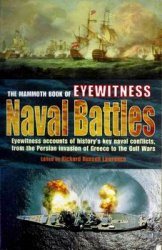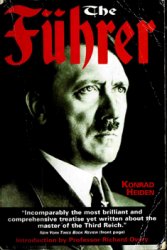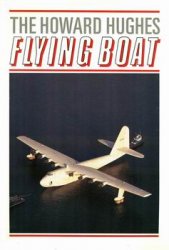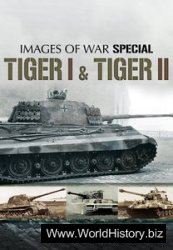
TWENTIETH CENTURY WARFARE
General Editor
DR NOBLE FRANKLAND

ORION
BOOKS
BRIGHTON
REF U42 . E533 1939
J
Copyright© 1989 Mitchell Beazley Publishers
First published in the United States of America by Crown
Publishers, 225 Park Avenue South, New York, N. Y.10003.
All rights reserved
No part of this work may be reproduced or utilized in any form by any means, electronic or mechanical, including photocopying, recording or by any information storage and retrieval system, without the prior written permission of the publishers.
THE ENCYCLOPEDIA OF 20TH CENTURY WARFARE was edited and designed by Mitchell Beazley International Limited, Artists House, 14-15 Manette Street, London WIV 5LB
Although all reasonable care has been taken in the preparation of this book, neither the publishers nor the contributors or editors can accept any liability for any consequences arising from the use thereof or from the information contained herein.
Typeset by Bookworm Typesetting, Manchester, England Typeset in 9/10 point Century Schoolbook medium Reproduction by J. Film Process, Singapore Printed and bound by Graficas Estella, S. A., Navarra, Spain
Library of Congress Cataloging-in-Publication Data The Encyclopedia of twentieth century warfare/general editor. Noble Frankland. p. cm.
Bibliography: p.
ISBN 0-517-56770-9:
1. Military art and science—History—20th century. 2. Military history. Modern—20th century. I. Frankland, Noble, 1922-xx. II. Title: Encyclopedia of 20th century warfare. U42.E533 1989
355'.009'04—dcl9 89-2976
CIP
First American edition ISBN 0-517-567709 Contributors
Contributors to the encyclopedia, together with the initials used to identify them (where appropriate) are listed below in alphabetical order by surname. All entries of 100 words or more are signed. '
John Allen, Senior Lecturer, Department of Communication Studies, Royal Military Academy, Sandhurst
SLB Suzanne L Bardgett, Special Assistant to the Deputy Director General, Imperial War Museum
AB Antony Beevor, military historian
Matthew Bennett MA, Department of Communication Studies, Royal Military Academy, Sandhurst
BB Professor Brian Bond MA, FRHistS, Professor of Military History, Department of War Studies, King’s College, London
SB Stephen Brooks, Curator, D-Day Museum, Portsmouth
J M Bruce ISO, MA, FRAeS, FRHistS, Former Deputy Director, Royal Air Force Museum, Hendon Lindbergh Professor of Aerospace History 1983-84, National Air and Space Museum, Smithsonian Institution, Washington DC
DC Diana Condell, Imperial War Museum
89047021
CD Caroline Detnon BR
MF M R D Foot, former Professor of Modern j,
Manchester University
ANF Dr Noble Frankland CB, CBE, DFC, Official Historian of the Strategic Air Offensive of World War II and former Director of the Imperial War Museum
SKF Sarah K Frankland BA
EJG Eric J Grove, Associate Director of the Foundation for International Security, Adderbury, Oxfordshire
MFl Colonel Michael Hickey
RH Dr Richard Holmes, Senior Lecturer at the Royal Military Academy, Sandhurst
WGFJ General Sir William Jackson GBE, KCB, MC,
Official Historian for the Mediterranean and Middle East Campaigns of World War II
DJL David J Lyon MA, naval and maritime historian and author, underwater archaeologist
CM Dr Callum MacDonald MA, DPhil, Senior Lecturer, Department of History, University of Warwick, Coventry
Davina Miller, Senior Lecturer, Department of International Affairs, Royal Military Academy,
Sandhurst; Consultant to Deakin University, Australia
RO’N Richard O’Neill, military historian, author of Suicide Squads: Special Attack Weapons of World War II
BHR Dr Brian Holden Reid FRHistS, FRGS, Lecturer in War Studies, King’s College, London; Resident Historian,
Staff College, Camberley
CRS Charles R Shrader
PJS Peter J Simkins, Historian, Research and Information Office, Imperial War Museum
MS Mark Seaman, Research and Information Office,
Imperial War Museum
Gary Sheffield, Royal Military Academy, Sandhurst
JTS Dr Jon Tetsuro Sumida, Associate Professor of History, University of Maryland, USA
HT Professor Hugh Tinker, Professor Emeritus,
University of Lancaster
WST William S Turley, Professor of Political Science,
Southern Illinois University, USA
CJW Christopher J Ware, naval historian
Contents
How to use this book Introduction by Dr Noble Frankland
The seven essays listed below are evenly distributed throughout the encyclopedia. A-Z entries are interspersed with the essays, beginning on p.22 and continuing through to p.459.
Prelude to modern warfare 1815-1914
Dr Hew Strachan
Fellow and Senior Tutor of Corpus Christi College, .
Land warfare in the 20th century
General Sir William Jackson GBE, KCB, MC
Official Historian for the Mediterranean and Middle East Campaigns of World War II
War at sea John B Hattendorf
Ernest J King Professor of Maritime History, US Naval War College
The emergence of air power
Dr Noble Frankland CB, CBE, DFC Former Director of the Imperial War Museum
Limited war in the nuclear age
Robert O’Neill
Chichele Professor of the History of War, All Souls College, Oxford
Underground warfare M R D Foot
Former Professor of Modern History, Manchester University
The nuclear stalemate
Lynn E Davis
Fellow, The Foreign Policy Institute, School of Advanced International Studies, Washington DC
Glossary of abbreviations and acronyms Bibliography
Breakdown of significant entries for World War I, World War II, Vietnam and Korea Acknowledgments
8-21
65-80
129-144
193-208
257-272
321-336
385-400
460-461
462
463
464
HOw to use this book
The encyclopedia is arranged alphabetically according to these rules:
1) The seven colour essays in the book follow their own logical and often chronological sequence rather than an alphabetical one (see Contents on preceding page).
2) Biographies are entered by surname, followed by final rank (where appropriate), then given name(s). The Victoria Cross is the only decoration cited in the entry title itself.
3) Entries with the same headword are listed in the order of people, places and things or chronologically.
4) Entries beginning with numerals are listed with the numeral spelt out and placed in the appropriate alphabetical position e. g. Eighth Army, One Hundred and First Parachute Division.
Cross-references These have been kept to a minimum; there are over 3,000 entries in the A-Z section of the encyclopedia and should the reader require further information on any given topic, it is probable that it can be found either as a headword in its own right or as part of a relevant entry. See also cross-references are used to identify entries that contain especially useful additional information. Prominent people are mentioned only by their surnames in some entries. In all such cases, separate biographical entries supply their full names, dates and ranks.
Major wars Important conflicts have, in addition to a main entry, many other entries giving details of individual battles, actions, theatres or phases of the war. World War II, for example, is covered in this way by 343 separate entries. A list of significant entries relating to each world war and to the wars in Korea and Vietnam can be found on p. 463.
Acronyms/abbreviations Acronyms and abbreviations which appear in small capitals within the text e. g. FULRO, SLBM are defined in the glossary on pp.460-461.
Codewords Only the most familiar e. g. “Overlord” are used. A list of these and their meanings can also be found in the glossary on pp.460-461.
Measurements Imperial measurements are given first, with the metric equivalent in parentheses. However, in some cases, especially weapon specifications (eg. 7.62mm rotary machine gun, or 12-pounder cannon), a conversion is clearly inappropriate. As the A-Z section is written by many different hands, there are variations between the bases of some measurements such as the tonnage of ships or the performance of aircraft.
Ranks A list of the abbreviations used for ranks is included in the glossary on pp.460-461.

Introduction
Warfare in the twentieth century has been radically different in scale, method and consequence from anything known in previous periods; it has even changed more in this century by comparison with the last, than it had done in the nineteenth century by comparison with Roman times.
At the turn of the century, submarine navigation was beginning to be established and man had taken to the air in lighter-than-air vehicles; but the stage of development of the first, and the restrictive character of the second, meant that warfare was conducted virtually exclusively on the surface of the land or the sea. The air was no more than the medium through which missiles, fired from the surface, passed on their way between military and naval combatants. Civil populations, although they often suffered from the ravages of war, were not primary targets and most of them were beyond the confines of the battlefields. In relation to what was about to come, war was a very limited business.
Four explosive developments occurred early in the twentieth century which, in the manner of a chain reaction, have produced the terms of warfare with which the world is now confronted as the century approaches its end. The first of these is the participation in the aims of warfare of entire populations and not simply of governments and small elements of society. It was the people who pushed the governments, and not the governments who pushed the people, into war in August 1914. The advent of democracy and universal suffrage enlarged the scope and bitterness of war beyond measure. Second, as a by-product of this, and as a consequence of the improvement of communications and transport and the development of mass-production in the aftermath of the industrial revolution, it was possible to increase the numbers of men in the field from thousands to millions. Third, huge improvements in the range and rate of fire power, and especially the development of machine guns, which had shown their potential in the American Civil War, meant that such forces could be contained and, indeed, for much of World War I, limited to movements of thousands or even hundreds of yards, despite the introduction of tanks. Fourth, the conquest of the air and the development of powered flight in heavier-than-air machines, together with the development of efficient engines to drive submarines, opened up two new dimensions of warfare: the air and beneath the sea. With therri, there also came the possibility of new forms of warfare, for aeroplanes, in addition to assisting armies and navies, might also strike directly and independently by strategic bombing at the sources of an enemy’s war economy and even at the enemy people themselves. Submarines, in addition to their role in naval engagements, might attack merchant shipping and blockade an enemy, using means which were less expensive and more efficient than surface ships could achieve. All these developments showed themselves with a vengeance in World War I.
In World War II they were greatly elaborated and, although tanks and the auxiliary use of air power did much to restore the mobility of armies, a way around ordinary land battle was also pursued with great vigour, especially by the British and Americans in the form of strategic bombing and by the Germans in that of submarine blockade. Neither of these however, in themselves produced conclusive results. The rate at which the bombers could destroy proved to be slower than that at which the victims could repair and when more effective methods were sought, the casualties inflicted on the bombers proved prohibitive. A similar fate befell the submarines. The decisive influence upon World War II remained the clash between armies and navies, albeit with air assistance.
Nevertheless, as World War II neared its end, three further developments occurred which seemed to open up a viable way around the battles between armies and navies. The German V-2, foreshadowing the intercontinental ballistic missile, showed a vehicle of bombing against which there was no defence and which cost the lives of no aircrews. The American production of the first atomic bombs, portending a range of nuclear weapons of unimaginable power, showed a weapon against which no capacity for repair could avail. The relatively simple German Schnorkel device offered submarines a far greater survival prospect and operational efficiency.
The combination of these three developments has led to the armoury of the contemporary nuclear stalemate; but the cost in destruction, and the fact that the destruction would be mutual, has so far deterred the operational use of such weapons since the dropping of the two atomic bombs on Japan in 1945. War, as an extension of policy, or as a means of resolving international dispute, has therefore, since 1945, been by limited means and without the use of nuclear weapons. The superpowers have almost entirely avoided direct military confrontation with each other and have tested the issues in actions against surrogates or between them. At the same time by, so to speak, pricing themselves out of the war market, the larger powers have encountered greater difficulties in controlling wars of an old-fashioned kind between lesser powers, such as those between Arabs and Israelis or Indians and Pakistanis.
The subject of warfare in the twentieth century is extensive and complex and I have therefore thought it especially worthwhile to attempt the production of a means of access to its numerous components in a categorized A-to-Z form; I have also thought it essential to provide the user with a series of explanatory essays on some of the main elements of the subject. No two minds would ever be completely in accord on the matters of what should be included and excluded in a work of this character, but I have endeavoured to relate my own opinion to those of the many expert contributors whose wisdom has been woven into the fabric of this book. In thanking them all, I must especially acknowledge the valuable advice on the construction of the volume given to me by Professor Robert O’Neill, Chichele Professor of the History of War at the University of Oxford, the work of Mr Richard O’Neill in laying the foundations of the headword list, the crucial advice on the development of that list offered by Mr Peter Simkins, the Historian at the Imperial War Museum and the indispensable analytical surveys made by Sarah Frankland. Among all the distinguished and expert contributors, I must specially mention Professor William S Turley of Southern Illinois University at Carbondale and Dr Galium MacDonald of Warwick University who have, respectively, written the entire A-to-Z entries on Vietnam and Korea. I should also like to thank Mr Jack Bruce, formerly Deputy Director of the Royal Air Force Museum, who has contributed nearly all of the lucid descriptions of aircraft.
Noble Frankland




 World History
World History









